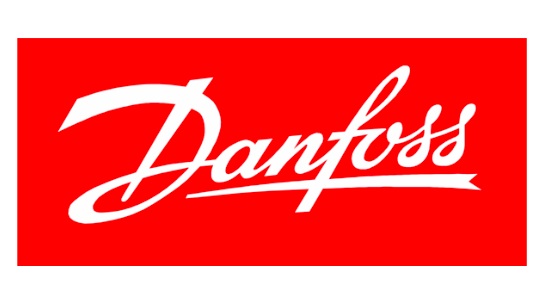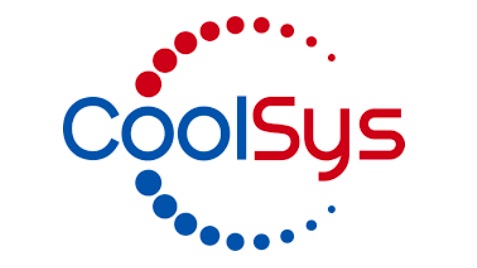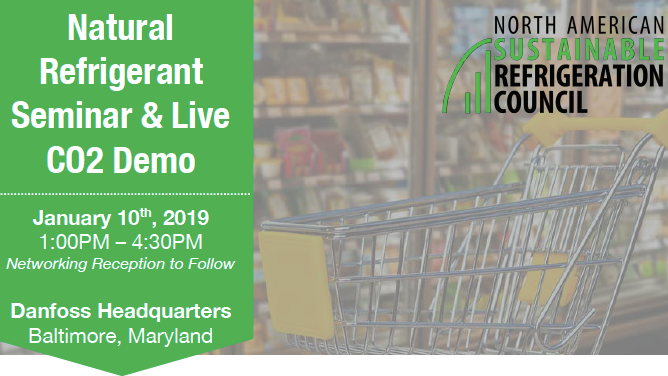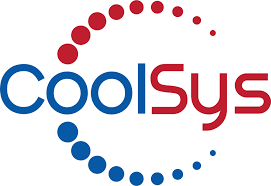San Francisco, California – On July 18th, the North American Sustainable Refrigeration Council (NASRC) organized a workshop aimed at aligning stakeholder goals and optimizing energy efficiency opportunities with low-GWP refrigerants. The workshop featured an update on refrigerant regulations from the California Air Resources Board (CARB), as well as an overview of low-GWP technologies that will help supermarkets comply with the new regulations. The intention of the workshop was to highlight the goals and challenges of key stakeholders and identify potential “win-win-win” solutions.
“We often hear that there is a perceived trade-off between GWP reduction and energy efficiency. But we see an opportunity to optimize energy savings with natural refrigerants, which represents a win for CARB, supermarkets, and California utilities. That was our primary goal with this workshop.”
- Danielle Wright, Executive Director, NASRC
The workshop was set in the context of California’s goals to reduce greenhouse gas emissions to 40% below 1990 levels by 2030 and to reduce HFC emissions to 40% below 2013 levels by 2030. To achieve these goals, CARB has proposed new regulations that would prohibit the use of refrigerants with a global warming potential (GWP) above 150 in new construction and ban the sale of virgin refrigerants with a GWP above 1,500 starting in 2022.
Though regulatory compliance is an important objective for supermarkets, they have a number of other goals to consider, such as keeping their products cold and their costs down. The pending regulations present a challenge for California supermarkets because many low-GWP technologies still represent a considerable cost premium. To really accelerate the adoption of refrigerant technologies below 150 GWP, supermarkets are going to need some financial support to offset cost premiums.
The workshop featured several potential solutions to help overcome existing cost hurdles, starting with a state incentive program. This year, the California State Legislature allocated $1 million to the state’s low-GWP incentive program, which was established in 2018 under the California Cooling Act. This incentive program is intended to promote adoption of new low-GWP refrigerant technologies throughout California. CARB announced that they are currently working to design the program and are looking for input from stakeholders.
In addition to state-level incentives, the workshop highlighted utility funding opportunities for projects that contribute to their energy efficiency targets. Workshop speakers discussed existing utility incentive opportunities that can apply to low-GWP refrigerant technologies, such as Pacific Gas and Electric’s (PG&E) custom incentive program and commercial whole buildings program. California supermarkets can participate in these programs to receive incentives for the energy and demand savings associated with projects using low-GWP refrigerant technologies. Customers of any investor-owned utility (IOU) can also take advantage of on-bill financing programs, which offer zero percent interest loans that are repaid through the customer’s utility bill.
A new financing mechanism that will leverage carbon offset credits for greenhouse gas emissions reductions from natural refrigerant projects was also discussed. In this scenario, the carbon offset credits would be purchased from a supermarket, reducing the upfront cost of a natural refrigerant project. The NASRC and Natural Capital Partners are partnering to pilot this carbon financing model with the hopes of scaling into a larger program. This funding source could then be coupled with state or utility incentives to make a low-GWP refrigerant project financially feasible.
“Any one of these financial options may not be enough to allow a supermarket to move forward with a natural refrigerant system,” said Wright. “But combining a number of financial mechanisms may be the solution that allows supermarkets to adopt natural refrigerant systems that will not be subject to future regulations.”
NASRC intends to help drive each proposed solution forward with the goal of combining funding opportunities to minimize cost barriers and contribute to the goals of California supermarkets, California utilities, and CARB.
The worship was co-hosted by PG&E and took place at their Pacific Energy Center (PEC) facility in San Francisco. Sponsored by Climate Pros, Hillphoenix, AHT Cooling Systems, and Bitzer US, the workshop was attended by over 100 California stakeholders, including supermarket retailers, service contractors, equipment manufacturers & suppliers, government agencies, utilities, engineering & design firms, consultants, and NGOs.
Check out more upcoming NASRC events here.










